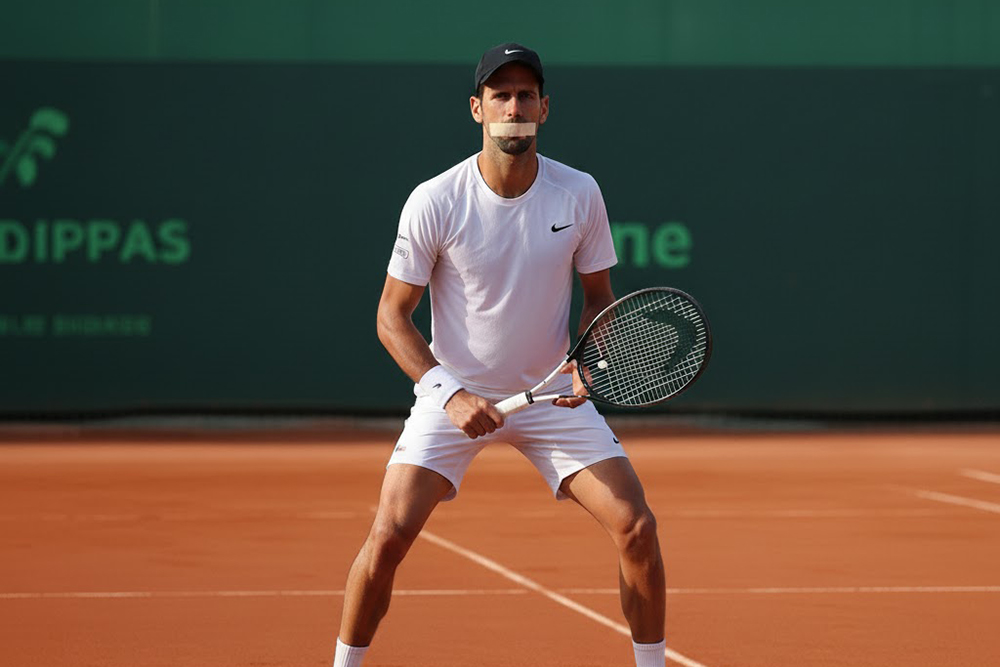October 29, 2025
In an industry where pressure is constant, time is limited, and decisions carry weight, few tools are as powerful, accessible, and underused as breathing. And not just “taking a deep breath”—we’re talking about a specific, science-based method: the 5.5/5.5 nasal breathing technique.
Breathing well isn’t just about staying calm. It’s about optimizing how your body uses oxygen, how your mind processes pressure, and how you show up—mentally and physically—when it counts most.
The technique
The method is simple:
Inhale through your nose for 5.5 seconds.
Exhale through your nose for 5.5 seconds. Yes—through your nose.
Try it right now, as you read this article.
This rhythm—around 5.5 breaths per minute—has been shown to regulate the nervous system, sharpen focus, and increase physical and emotional resilience. It’s a method backed by science and used in fields as diverse as military training, professional sports, and high-stress leadership.
Better oxygen doesn’t mean more air—it means better use
One of the biggest misconceptions about energy and breathing is thinking that taking in more air equals more oxygen. In reality, it’s not about how much oxygen you breathe in—it’s about how much reaches your cells and gets used efficiently.
When you breathe slowly and through the nose:
- Your body produces nitric oxide, a powerful molecule that opens up blood vessels and improves circulation.
- You maintain optimal carbon dioxide levels, which is essential for oxygen to be released from the blood and delivered to your muscles and brain.
- You reduce hyperventilationand stabilize your internal chemistry, leading to better energy distribution throughout the body.
- You allow the oxygen to remain longer in your system, giving your body more time to absorb and use it effectively.
The result? More energy, less fatigue, and sharper mental clarity—because your body is actually using the oxygen you already have available.
Novak Djokovic trains like this—for a reason
One of the most striking examples of this principle in action is tennis champion Novak Djokovic. During certain training sessions, Djokovic uses mouth tape to force himself to breathe only through the nose. This isn’t a gimmick—it’s a method rooted in science.
By training his body to breathe this way—even under intense physical effort—Djokovic:
- Enhances oxygen delivery and energy efficiency
- Boosts endurance by delaying fatigue
- Strengthens mental focus during high-pressure moments
In elite sports, where every movement and decision counts, mastering your breathing is a competitive edge. And that same principle applies to business.
What Estanislao Bachrach recommends
Argentine neuroscientist Estanislao Bachrach promotes the 5.5/5.5 breathing method as a powerful performance tool. He recommends practicing it 3 to 7 times per day, five days a week, for three to four weeks. Bachrach even suggests that some people sleep with a small tape over their mouth to encourage nasal breathing during the night — a simple practice that helps maintain proper oxygen and carbon dioxide balance while resting.

Bachrach often says that nasal breathing “doubles your energy.” While not a literal measurement, it captures the real-life impact of this habit: feeling stronger, clearer, more grounded, and more capable throughout the day—especially when facing challenges or decision-making under stress.
Why this matters in lending
This isn’t just for athletes or meditators. It’s a practical, repeatable tool for professionals who work in high-pressure environments—especially Loan Officers and Account Executives.
- Before an important meeting, one minute of nasal breathing helps you calm your nervous system and regain focus.
- During a tense negotiation, it gives you a moment to pause and respond strategically rather than react emotionally.
- After a rejection or tough day, it helps you reset, so you can step into the next conversation without carrying unnecessary tension.
A quiet, strategic advantage
Breathing well doesn’t make headlines—but it does make a difference. It influences how much energy you can access, how clearly you can think, and how present you can be in front of clients, teams, and tough decisions.
This technique doesn’t just help you relax. It helps your body perform more efficiently and your mind operate with greater clarity.
And it all starts with something simple:
Inhale through your nose.
Exhale through your nose.
And let that rhythm become part of how you lead.

Uriel Fleicher
Editor in Chief and Co-Founder of The Elite Officer
Uriel Fleicher is a lawyer from Argentina with a strong academic background, holding a Master in Business Law and currently pursuing an MBA. Throughout his extensive career, he has provided legal counsel to Private Lending Firms in Argentina, which allowed him to establish valuable connections with key industry leaders in the United States. This experience enabled him, along with his partners, to identify a unique opportunity: the creation of The Elite Officer.
This column is part of Neuroscience in Action: A Tribute to the Teachings of Estanislao Bachrach, a series exploring how neuroscience can be applied to everyday performance in the lending industry.
This section is independently produced by the editorial team of The Elite Officer. It is inspired by the public lectures and published works of neuroscientist Estanislao Bachrach, but it is not affiliated with or endorsed by him.
Estanislao Bachrach
Holds a PhD in Molecular Biology from the University of Montpellier and a Bachelor’s in Biological Sciences from the University of Buenos Aires, with additional leadership and innovation training at Harvard University. He has taught at Universidad Torcuato Di Tella, speaks internationally, and is known for blending neuroscience, creativity, emotions, and leadership. He’s the author of several impactful books: ÁgilMente (translated into English as The Agile Mind: How Your Brain Makes Creativity Happen – 2017) ; EnCambio (2015); Cuentos y Juegos para Ágiles Mentes (2016); Random (2017); Zensorial (Spanish title: Zensorialmente: Dejá que tu cuerpo sea tu cerebro, 2023); ÁgilMente 2 (2023); and ¡Soltá! (2024). His work centers on applying brain science to enhance well‑being, emotional intelligence, decision‐making, and the link between mind and body through sensory awareness.

